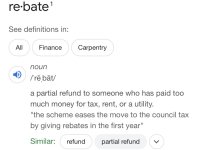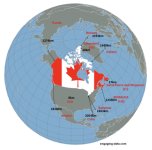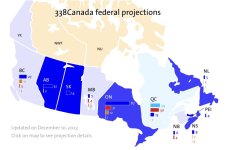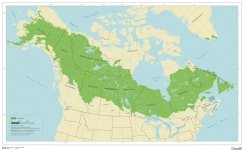Prime Minister Justin Trudeau stepped in it when he removed the carbon tax from furnace oil, while leaving 97% of Canadians out in the cold.
Even in Atlantic Canada, where Trudeau tried to buy off MPs with the carve-out, 77% of people in the region support carbon tax relief for everyone.
But Trudeau’s mistake wasn’t providing relief. The real lesson here is Trudeau never won the hearts and minds of Canadians. And he lost credibility early on. Months before the 2019 election, the former environment minister said the government had “no intention” of raising the carbon tax beyond 11¢ per litre of gas.
After the election, Trudeau announced he would keep cranking up his carbon tax until it reached 37¢ per litre.
Trudeau and his ministers repeat the myth that eight out of 10 families get more money in rebates than they pay in carbon taxes.
Their favourite talking point limps on despite the obvious reality that a government can’t raise taxes, skim money off the top to pay for hundreds of administration bureaucrats and still make everyone better off.
In fact, the carbon tax will cost the “average” family up to $710 more than they get back in rebates this year, according to the Parliamentary Budget Officer…. whatever the government defines an “average” family as…& assuming they get a “rebate” at all.
Then on the subject of definitions, has anyone actually looked up the definition of “rebate” as it relates to these carbon taxes? A rebate is defined as a partial refund to someone who has paid too much money for tax, rent, or a utility.

So giving someone a “partial” refund from what is taken from them doesn’t put more in the pockets then not taking it from them in the first place….again assuming they even see any rebate whatsoever.
Making it more expensive to live in Canada won’t reduce emissions in China, Russia, India or the United States. And this leads to Trudeau’s diplomatic failure.
At the United Nations, the Trudeau government launched the Global Carbon Pricing Challenge to get more countries to impose carbon taxes.
“The impact and effectiveness of carbon pricing increases as more countries adopt pricing solutions,” the Trudeau government acknowledged.
The world’s largest economy, the United States, and the only country that Canada is physically connected to rejects carbon taxes. The next closest country to Canada is Greenland (a territory of Denmark), and what’s our trade volume with Greenland (or Denmark) again?


 apple.news
apple.news
Even in Atlantic Canada, where Trudeau tried to buy off MPs with the carve-out, 77% of people in the region support carbon tax relief for everyone.
But Trudeau’s mistake wasn’t providing relief. The real lesson here is Trudeau never won the hearts and minds of Canadians. And he lost credibility early on. Months before the 2019 election, the former environment minister said the government had “no intention” of raising the carbon tax beyond 11¢ per litre of gas.
After the election, Trudeau announced he would keep cranking up his carbon tax until it reached 37¢ per litre.
Trudeau and his ministers repeat the myth that eight out of 10 families get more money in rebates than they pay in carbon taxes.
Their favourite talking point limps on despite the obvious reality that a government can’t raise taxes, skim money off the top to pay for hundreds of administration bureaucrats and still make everyone better off.
In fact, the carbon tax will cost the “average” family up to $710 more than they get back in rebates this year, according to the Parliamentary Budget Officer…. whatever the government defines an “average” family as…& assuming they get a “rebate” at all.
Then on the subject of definitions, has anyone actually looked up the definition of “rebate” as it relates to these carbon taxes? A rebate is defined as a partial refund to someone who has paid too much money for tax, rent, or a utility.

So giving someone a “partial” refund from what is taken from them doesn’t put more in the pockets then not taking it from them in the first place….again assuming they even see any rebate whatsoever.
Making it more expensive to live in Canada won’t reduce emissions in China, Russia, India or the United States. And this leads to Trudeau’s diplomatic failure.
At the United Nations, the Trudeau government launched the Global Carbon Pricing Challenge to get more countries to impose carbon taxes.
“The impact and effectiveness of carbon pricing increases as more countries adopt pricing solutions,” the Trudeau government acknowledged.
The world’s largest economy, the United States, and the only country that Canada is physically connected to rejects carbon taxes. The next closest country to Canada is Greenland (a territory of Denmark), and what’s our trade volume with Greenland (or Denmark) again?

TERRAZZANO: Trudeau’s real failure is the carbon tax and not a carve-out — Toronto Sun
Prime Minister Justin Trudeau stepped in it when he removed the carbon tax from furnace oil, while leaving 97% of Canadians out in the cold. Even in Atlantic Canada, where Trudeau tried to buy off MPs with the carve-out, 77% of people in the region support carbon tax relief for everyone. But...








